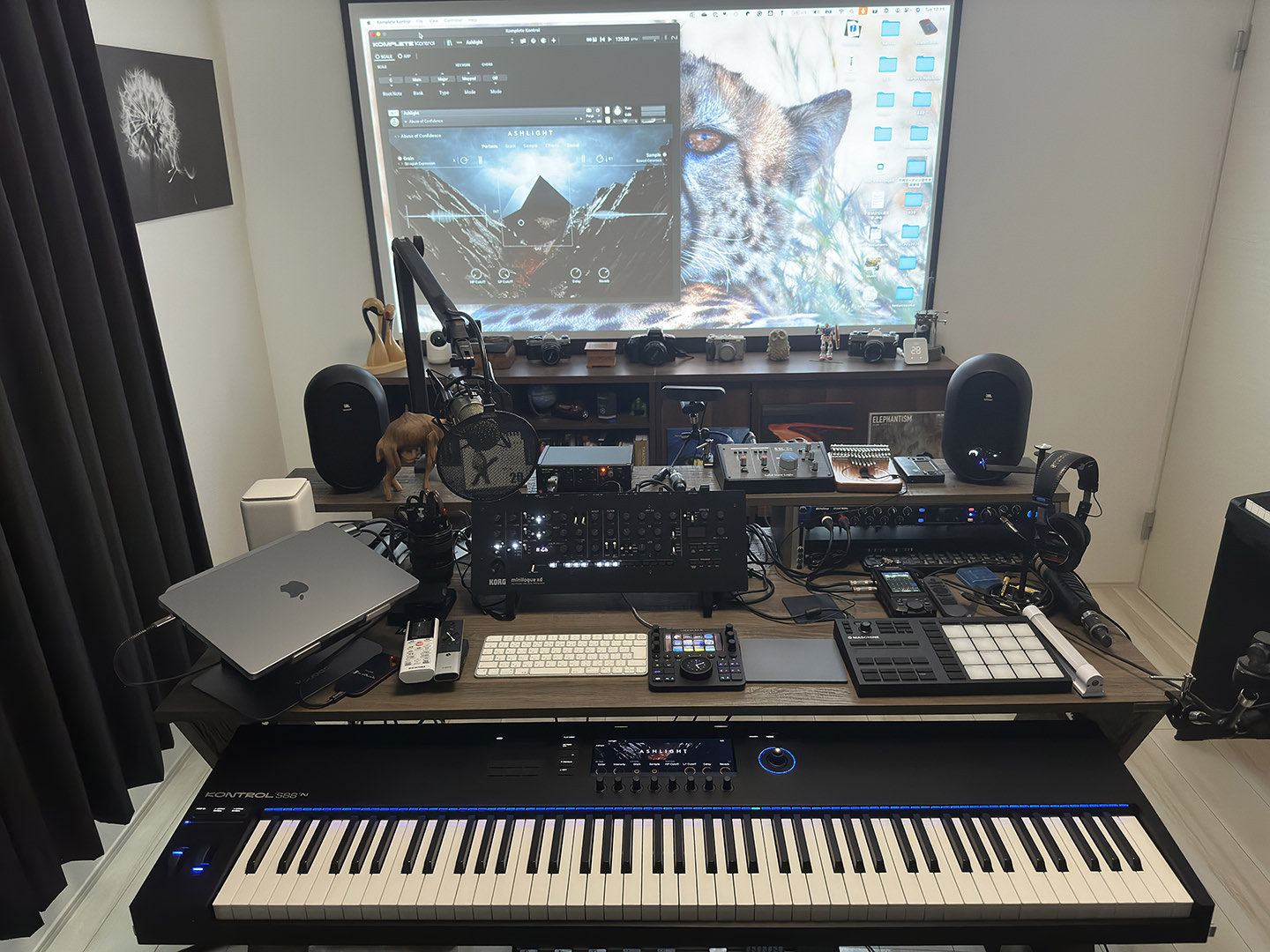Visit Library for MBP Pro eBooks |
A few episodes ago, I mentioned that I would put together a tour of my new studio space, which is audio-centric. My photography studio is now in a separate room downstairs, in our new home in the Gunma Prefecture, an hour or so northwest of Tokyo. If you recall my space in Tokyo, I had a background pully system for portrait and product shots, and that is what I have in my downstairs room now, along with my cameras, microscopes, etc. The room is still in a bit of a mess after our move, though, so if it’s worth covering that, I’ll share a video on that as well in due course.
The decision to make my main workroom audio-centric was really because I will continue to create the podcast, though less frequently now, and I wanted to make it easy to create music, which I’ve been doing mainly for background music for my video productions and the Podcast background music for many years now. Of course, I also process my images in this space, but that requires a computer and a place to sit, so this new space also works fine.
Anyway, in the video, I walk you through the space, discussing some music production, and I share details of the audio setup, including considerations for someone getting started in Podcasting. However, as you’ll see, my setup is far more complex than what a beginner needs. The main goal of my latest addition, a Behringer Ultravoice UV1 Mic Pre-Amp and Voice Processor is to enable me to run some processing on my voice in real-time, and that, along with a new large-diaphragm condenser mic, the AKG C214, provides the best-sounding audio I’ve been able to achieve so far, both for recording, and real-time, for interviews etc.
The problem, though, is that the AKG C214 is a studio mic, which picks up every stray noise in the recording space, so during the summer months, I will have to revert to two other great mics, my RODE Procaster or Heil PR40, as the Behringer UV1 cannot process out the sound of my air-conditioning picked up by the AKG C214. The Procaster and Heil, being dynamic mics, as opposed to condenser mics, aren’t quite as sensitive and, therefore, don’t have that problem. Few people will be able to tell the difference in regular listening conditions. For those of you who listen with high-quality headphones, though, you’ll notice a difference, and I demonstrate that to a degree in the video.
I finish with a section showing me playing the first 90 seconds of Debussy’s Claire de Lune, one of my favorite classical pieces. It’s not perfect by a long shot, but that’s as far as I’ve gotten in learning the entire piece, so I figured I’d include it. Please check out the video below, and if possible, listen with good-quality headphones to hear the details I’m talking about.
If you’d like to view the video in full-screen mode, please watch it on Vimeo: https://vimeo.com/1010829985
Affiliate Links from the video:
AKG Pro Audio C214 Condenser Mic: https://mbp.ac/akgc214
Sony MDR-CD900ST Studio Headphones: https://mbp.ac/sonymdr
Behringer Ultravoice Microphone Preamp (UV1): https://mbp.ac/uv1
Korg Minilogue XD 4-Voice Analog Synthesizer Module: https://mbp.ac/mxd
Tascam Portacapture X8: https://mbp.ac/tx8
PreSonus Studio 1824c Audio Interface: https://mbp.ac/p1824c
Tascam US-2x2HR 2 Mic Audio Interface: https://mbp.ac/t2x2
Note that following the Amazon Affiliate links may result in us receiving a small payment. Thank you for supporting the MBP Podcast!
Show Notes
Subscribe in iTunes to get Podcasts delivered automatically to your computer.
Download this Podcast as an MP3 with Chapters.
Visit this page for help on how to view the images in MP3 files.



0 Comments